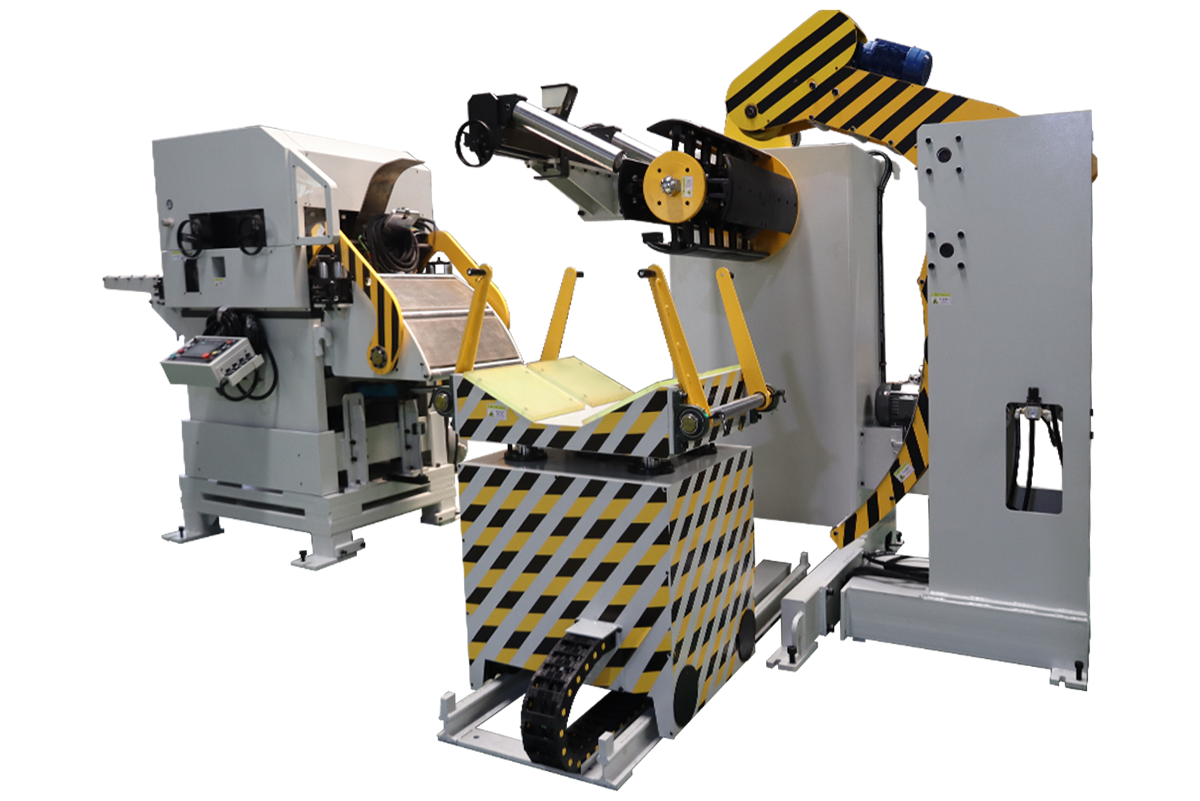In the fast-paced world of manufacturing, efficiency is paramount. Any bottleneck or inefficiency in the workflow can lead to costly delays and decreased productivity. This is where 3-in-1 decoiler straightener feeder systems shine, offering a streamlined solution that optimizes workflow and enhances overall efficiency. In this exploration, we delve into the capabilities and advantages of these integrated systems, uncovering how they empower manufacturers to achieve peak performance.
At the heart of 3-in-1 decoiler straightener feeder systems lies their multifunctionality, combining three essential processes into a single, cohesive unit. Traditionally, these processes—decoiling, straightening, and feeding—were performed by separate machines, each requiring its own space, setup, and maintenance. By integrating these functions into a unified system, 3-in-1 decoiler straightener feeder systems eliminate the need for multiple machines, reducing floor space requirements and simplifying the production line layout.
The integration of decoiling, straightening, and feeding functionalities into a single system offers several distinct advantages. First and foremost is the optimization of workflow. With all three processes seamlessly integrated, material handling becomes smoother and more efficient, minimizing downtime and maximizing throughput. This streamlined workflow translates into significant time and cost savings, enabling manufacturers to meet production targets more effectively and competitively.
Moreover, 3-in-1 decoiler straightener feeder systems enhance precision and accuracy in material processing. By eliminating the need to transfer material between separate machines, potential errors and inconsistencies are reduced, ensuring uniform quality across the entire production run. This is particularly crucial in industries where tight tolerances and high-quality standards are paramount, such as automotive manufacturing and aerospace engineering.
Another key advantage of 3-in-1 decoiler straightener feeder systems is their versatility and adaptability. These integrated systems are capable of handling a wide range of materials, including metals, plastics, and composites, with varying thicknesses and properties. This versatility allows manufacturers to diversify their product offerings and respond swiftly to changing market demands, without the need for extensive retooling or setup changes.
Furthermore, 3-in-1 decoiler straightener feeder systems offer improved operator safety and ergonomics. By consolidating multiple processes into a single unit, these systems reduce the number of moving parts and potential safety hazards on the production floor. Additionally, ergonomic considerations such as adjustable feed height and intuitive controls enhance operator comfort and usability, further contributing to a safer and more productive work environment. In addition to their operational benefits, 3-in-1 decoiler straightener feeder systems also contribute to sustainability and environmental responsibility. By optimizing material usage and minimizing waste, these integrated systems help reduce the overall carbon footprint of manufacturing operations. Furthermore, their energy-efficient design and intelligent control features contribute to lower energy consumption and operational costs, aligning with the growing emphasis on sustainability in the manufacturing sector.
Looking ahead, the future holds promising advancements and innovations in 3-in-1 decoiler straightener feeder systems. Emerging technologies such as advanced sensors, predictive analytics, and machine learning algorithms offer opportunities to further enhance performance, efficiency, and reliability. Additionally, developments in materials science and additive manufacturing techniques may open up new possibilities for even lighter, stronger, and more versatile system components.
The 3-in-1 decoiler straightener feeder systems represent a paradigm shift in material processing, offering a holistic solution that optimizes workflow, enhances precision, and improves overall efficiency. By integrating decoiling, straightening, and feeding functionalities into a single, cohesive unit, these systems empower manufacturers to streamline their production processes, minimize costs, and stay competitive in today’s dynamic marketplace. As manufacturing continues to evolve, the power of 3-in-1 decoiler straightener feeder systems will undoubtedly play a central role in shaping the future of industry.

At the core of 3-in-1 decoiler straightener feeder systems lies their ability to seamlessly combine three essential functions—decoiling, straightening, and feeding—into a single, integrated unit. Traditionally, each of these processes required separate machines, leading to increased floor space requirements, setup complexities, and operational inefficiencies. By consolidating these functions into a unified system, manufacturers can streamline their production lines, reduce costs, and enhance overall efficiency.
With all three processes integrated into a single unit, material handling becomes smoother and more efficient. This eliminates the need for manual transfer of materials between machines, reducing the risk of errors, delays, and bottlenecks in the production process. As a result, manufacturers can achieve higher throughput rates and meet production targets with greater ease and reliability.
Moreover, the integration of decoiling, straightening, and feeding functionalities into a single system enhances precision and accuracy in material processing. By minimizing the number of handling steps, these systems reduce the likelihood of dimensional variations and surface defects, ensuring uniform quality across all produced parts. This level of consistency is crucial in industries such as automotive manufacturing, aerospace engineering, and electronics assembly, where even minor deviations can have significant consequences.
In addition to their operational benefits, 3-in-1 decoiler straightener feeder systems also contribute to sustainability and environmental responsibility. By optimizing material usage and minimizing waste, these integrated systems help reduce the overall carbon footprint of manufacturing operations. Furthermore, their energy-efficient design and intelligent control features contribute to lower energy consumption and operational costs, aligning with the growing emphasis on sustainability in the manufacturing sector.
Looking ahead, ongoing advancements in technology and engineering are poised to further enhance the capabilities of 3-in-1 decoiler straightener feeder systems. Emerging technologies such as advanced sensors, predictive analytics, and machine learning algorithms offer opportunities to optimize performance, efficiency, and reliability even further. Additionally, developments in materials science and additive manufacturing techniques may open up new possibilities for lighter, stronger, and more versatile system components.